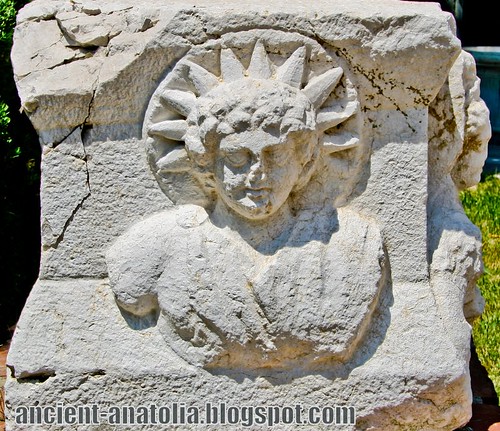
Sol Invictus of Antioch of Pisidia at Archaeology Museum of Yalvac near Konya, Turkey.
Sol Invictus ("Unconquered Sun") was the Roman state-supported sun god created by the emperor Aurelian in 274 and continued, overshadowing other Eastern cults in importance, until the abolition of paganism under Theodosius I. By far the earliest appearance of an inscription linking the unconquered emperor with the sun is the legend on a bronze phalera dated by its style to the second century, in the Vatican collections: INVENTORI LUCIS SOLI INVICTO AUGUSTO.
The Romans held a festival on December 25 of Dies Natalis Solis Invicti, "the birthday of the unconquered sun." December 25 was the date after the winter solstice, with the first detectable lengthening of daylight hours. There was also a festival on December 19.
The title Sol Invictus had also been applied to a number of other solar deities before and during this period. The type of Sol Invictus, though not the name, appears on imperial coinage from the time of Septimius Severus onwards. A solidus of Constantine as well as a gold medallion from his reign depict the Emperor's bust in profile twinned ("jugate") with Sol Invictus, with the legend INVICTUS CONSTANTINUS
Though many Oriental cults were practiced informally among the Roman legions from the mid-second century, only that of Sol Invictus was officially accepted and prescribed for the army.
PHOTO: Sol Invictus at Archaeology Museum of Yalvac, Turkey, originally uploaded by voyageAnatolia.blogspot.com.